The full name of St. Andrew's United Reformed and Methodist Church gives a hint to the past history of nonconformity in Sedgley. In the middle of the C19th a short walk from this Congregational Church lead to places of worship for Primitive Methodists in Tipton Street built in 1857 and Wesleyans in Bilston Street built in 1849.
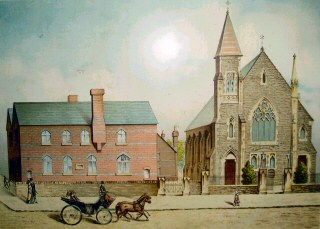
1894 print of the Congregational Church & Darbey School © SLHS
This picture
celebrated 50 years of
worship in Castle Street
The foundations were laid in March 1857 and in October the church was opened for worship. It was built in the decorated Gothic style and its tower, topped with a spire, was 80 feet in height. Inside a rear balcony brought the seating capacity to over 500. [A 1980s underfloor discovery suggested that in the original plans there was an intention to extend the balcony down each side.]
Stephen Wilkes, a Ruiton Congregationalist and nail factor, living in Sedgley Hall gave the land and £1,000 towards the building costs of £2,000. He also funded the caretaker's house adjacent to the west side of the church. Earlier, in the 1830s, worship had taken place in his house and in 1844 he financed the erection of a school in Castle Street. This also served as a chapel.

Pre 1905 interior of the Congregational Church © John Cooper
Arch inscription 'O
Worship the Lord
in the beauty of holiness'
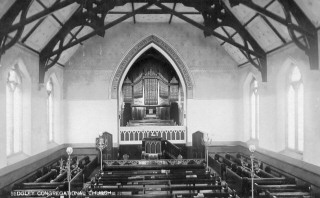
Post 1905 interior of the Congregational Church © John Cooper
Arch inscription,
as before - first
line of John Monsell's 1863 hymn
On the west side, and in line with the front of church, Thomas Darbey paid for a 'commodious' school to be built in 1861. This was enlarged in 1878 at church expense. The day school was church controlled until 1879 when the management and leasing passed to the newly elected Sedgley School Board.
In 1905, Hilton, the Bull Ring based builder, extended the church at the north end to accommodate an organ, choir stalls and a vestry. The Victorian manse, on the east side, eventually became a private residence when a new manse, across the street, opened in 1928.
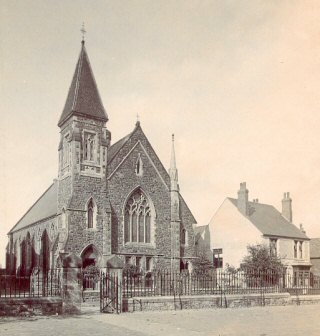
Circa 1920s exterior of the Congregational Church & Old Manse © John Cooper
Queen Victoria
School railings &
gateposts in the foreground
In the late 1960s Bilston Street Congregationalists together with High Street and Tipton Street Methodists talked about a merger. Protracted discussions finally lead to the birth of a new denomination on the Bilston Street site and continued worship at Tipton Street for the Methodists. The service of Union was held at St. Andrew's on October 3rd 1970. The Methodist chapel on the High Street, originally a Temperance Hall and used by the Bilston Street Wesleyans from 1904, was sold and demolished in 1985.
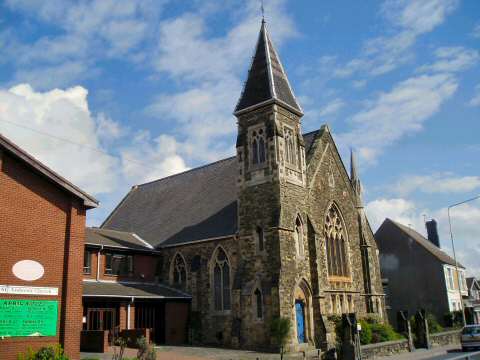
2006 exterior of St. Andrew's Church © SLHS
Note the 1980s
redevelopment on the
west side of the original church
A variety of minor modifications, started in the early 1950s, culminated in a 1982/3 demolition and building project linking the main church to a two-storey extension with meeting rooms, an office, a kitchen and toilets. Outside a sports pitch and car park were completed bringing the total cost to £89,000.
During the spring and summer of 2014 the front elevation was significantly modified to create a new entrance leading to a community café under the existing balcony. The project cost £150,000. When money is available a ramp access will be added.
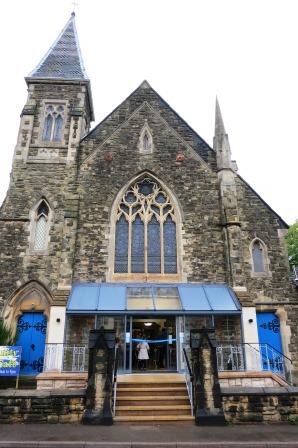
October 2014 exterior of St. Andrew's Church © SLHS
Officially opened
on October 4th 2014 by Mayor of Dudley, Cllr Margaret Aston
Since 1970 nine Ministers have served the church - Richard Snuggs [1970/72], Jim McWade [1972/79], Ron Parker [1980/90], John Dews [1988/1996], non stipendiary, Peter Longbottom [1990/92], David Firth [1992/1997], Christopher Parker [1998/2003] Roger Hides [2004/2013] and Barry Welch [2014/ to date].
St. Andrew's is the home of St. Andrew's Singers, formed in 1973, and Sedgley Local History Society, started in 1984. Full details of Sunday services and other activities can be found here.
Photographs of the stained glass windows and foundation stones can be found here.
